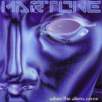Have you ever wanted to record with one of your friends but could not afford to fly to the far ends of the earth to do the session, or vice versa?
I have pondered this question, and I still do not know if the outcome is the correct one!
Today, technology makes it extremely easy to fulfill this task. I will explain.
I am working on a project with a few mates from the USA who all have different systems to record on. Some Mac, others PC, and some even D88 digital tape like the ADAT system. I wanted to have them all play a solo on one of the new tracks I am working on. At first, it seemed difficult in my mind how to arrange all of these different players to come together to do this. Then technology took over in my head. This might be something new to some of you, or old hat to others, but I thought it would make a good column for this month.
The main thing that needed to be done was firstly, for me to make an exported file from my system, (Sonar 2.2) to give to the players. I had to make sure that the file was exported on my computer system at 0:00 on the timing side of things. This means to have the song start at the same time on their system as it does on mine. This is very easy in the DAW (Digital Audio Workstation) situation that we have today. I had to forward the CD to them through the mail. I could have sent an MP3 through email but decided to give them total aural delight with a full 44.1 16-bit file. It is also very important for them to know the tempo for the track so they can set their software to the same tempo.
I marked down on the measure counter where each player was to enter their solo, and to make sure no one played over the bar line. This would cut out some potentially crazy licks from the next guy.
Once they received the file all they had to do was to import the audio into their system at 0:00. They could enter whatever file they wanted into their system depending what they needed. An example would be a .wav file for PC, or either an .aif file or a Pro Tools file for the Mac people.
Let the shredding begin. After they tracked their sections they had to make sure there was blank audio from the beginning of the track so I could import it into Sonar. This is quite easy to do. You could start recording some blank sound at 0:00 and stop within a second or two. Then combine the two pieces of audio together so it is one solid audio file. Then they burn it to CD and send it over. That is actually it.
One of the players was not so lucky. He had the D88 system. This is like ADAT. It made it a little more difficult but we figured it out. I had sent him the track on CD like I mentioned. I made sure there was a click of 8 counts before the track started on his mix. He recorded the CD onto 2 tracks of the D88. Then tracked his solo to the mix.
I then had him put all of the backing track on one channel (let's say the left channel) and his lead on the right channel. He then burned this to a CD at the necessary resolution. Once I received his audio CD, all I had to do was to export the file into a .wav and line up the 8 entrance clicks. It was very easy to do. Of course I discarded the other channel of the backing track and kept his solo.
This was a great experience in making music more close to home with people that are all over the planet. The only downside is that you don't get to fly to wherever and sample their culture and beer while you are there doing your track!
Let the overdubbing commence!
May the tone be with you.
David Martone is a guitarist from Vancouver, Canada who has released seven solo CDs which showcase his musical diversity and brilliant guitarmanship.
His 2007 CD is entitled "When The Aliens Come", which features a progressive sound incorporating jazz, rock, fusion and metal influences.
